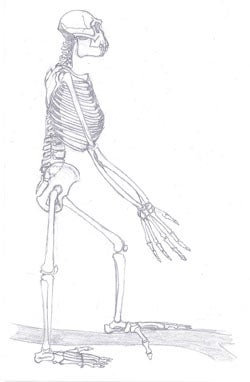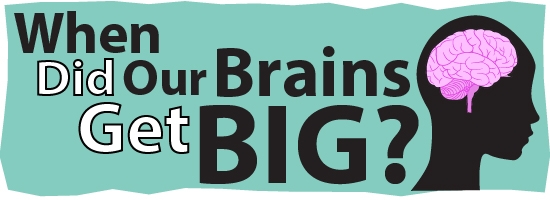show/hide words to know
Cubic centimeter: a measure of volume. One cubic centimeter corresponds to a cube that has a height of 1cm, a length of 1cm, and a width of 1 cm.
Ethiopia: a country in east Africa. ... more
Ardipithecus
The animal moved quietly through the tree, from branch to branch. Slowly, it started to climb down and soon it landed on the ground. There, it stood up on two feet and walked away. Living a life in the trees doesn't mean you can't walk on two feet.
 Ardipithecus is an early hominin known from Ethiopia, Africa. This group existed from about 5.8 to 4.4 million years ago. The better-known species of that group, Ardipithecus ramidus, is dated to 4.4 million years ago. This species was bipedal but still relied heavily on life in the trees.
Ardipithecus is an early hominin known from Ethiopia, Africa. This group existed from about 5.8 to 4.4 million years ago. The better-known species of that group, Ardipithecus ramidus, is dated to 4.4 million years ago. This species was bipedal but still relied heavily on life in the trees.
The brain size of this species was small, measuring around 350 cubic centimeters, which is about the size of two and a half tennis balls. It was small even compared to the chimpanzee, which has a brain size of about 400 cubic centimeters. For comparison, human brains are nearly three times this size. Ardipithecus ate mostly fruit and did not include much meat in its diet. Could this be part of the reason their brains were so small?
Brains and bodies
The body sizes of Ardipithecus ramidus and chimpanzees were similar. We can therefore say that Ardipithecus ramidus had a relatively smaller brain compared to the chimpanzee. Given its small brain size, it is not surprising that Ardipithecus ramidus is not found with stone tools. It is possible that it used simple tools though, much like chimpanzees. For example, chimpanzees use sticks to fish for termites. Unfortunately, these kinds of tools would not be preserved in the fossil record.
When did human ancestors use stone tools?
Answer »









